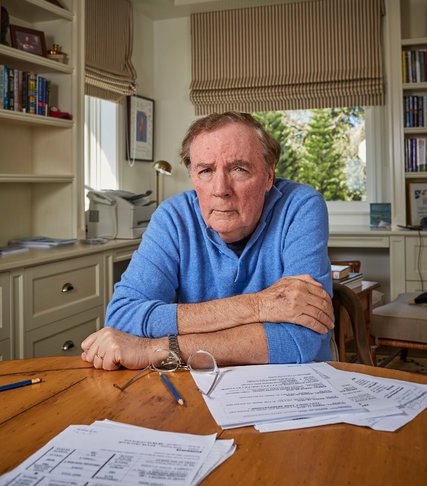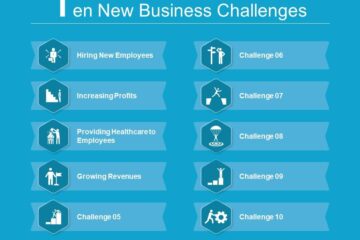
People already read James Patterson’s books — and in staggering numbers. Last year, he and his team of writers had 36 books land on the New York Times best-seller list. To date, he has published 156 books that have sold more than 325 million copies worldwide.
But Mr. Patterson is after an even bigger audience. He wants to sell books to people who have abandoned reading for television, video games, movies and social media.
So how do you sell books to somebody who doesn’t normally read?
Mr. Patterson’s plan: make them shorter, cheaper, more plot-driven and more widely available.
In June, Mr. Patterson will test that idea with BookShots, a new line of short and propulsive novels that cost less than $5 and can be read in a single sitting. Mr. Patterson will write some of the books himself, write some with others, and hand pick the rest. He aims to release two to four books a month through Little, Brown, his publisher. All of the titles will be shorter than 150 pages, the length of a novella.
Mr. Patterson said the books would be aimed at readers who might not want to invest their time in a 300- or 400-page novel. And he hopes they might even appeal to people who do not normally read at all. If it works, it could open up a big new market: According to a Pew Research Center survey released last fall, 27 percent of American adults said they had not read a book in the past year.
“You can race through these — they’re like reading movies,” he said during a recent interview in New York. “It gives people some alternative ways to read.”
It could also open up new avenues for selling books, something that publishers have struggled with as big bookstore chains have closed down stores. At first, BookShots will appear in the usual venues for commercial fiction — Barnes & Noble, Amazon, big-box stores and independent bookstores — and will be available in digital and audio versions.
JAMES PATTERSON, BY THE NUMBERS
James Patterson’s books have captured the imaginations of young and old readers alike.
-
1976
Mr. Patterson, then a creative director for the ad agency J. Walter Thompson, publishes his debut novel, “The Thomas Berryman Number,” with Little, Brown, which pays him a modest advance of $8,500. The novel sells around 10,000 copies.
-
1993
Mr. Patterson publishes “Along Came a Spider,” his breakout novel and the first in his best-selling series about the homicide detective Alex Cross. He writes and pays for his own TV ads. The Alex Cross series goes on to sell 88 million copies globally.
-
1996
Mr. Patterson becomes a full-time writer and ramps up his publishing output to three books a year, with help from co-writers. The model works, and he eventually amasses a stable of 25 co-writers.
-
2005
Mr. Patterson publishes his first children’s book, “Maximum Ride: The Angel Experiment.” He’ll go on to publish 45 more children’s books, which have sold more than 36 million copies.
-
2015
To capture a bigger slice of the booming children’s book market, and to help drive children’s literacy, Mr. Patterson creates his own children’s book imprint, JIMMY Patterson, with Little, Brown, and publishes 17 original adult and children’s book titles.
-
2016
BookShots, a series of short, inexpensive books, which will include fiction and nonfiction, is started. Mr. Patterson is on track to publish around 40 books this year.
But eventually, Mr. Patterson and his publisher want to colonize retail chains that don’t normally sell books, like drugstores, grocery stores and other outlets. They envision having BookShots next to magazines in grocery store checkout lanes, or dangling from clip strips like a bag of gummy bears.
“Those venues are very inhospitable to traditional publishing, but we think this is a type of book that could work very well there,” said Michael Pietsch, the chief executive of Hachette Book Group, which publishes Mr. Patterson’s books in the United States through its Little, Brown imprint. “He has enough recognition that his name can make it work.”
In some ways, Mr. Patterson’s effort is a throwback to the dime novels and pulp fiction magazines that were popular in the late 19th and early 20th century, when commercial fiction was widely available in drugstores.
The category seems ripe for a modern-day revival. Many readers have already developed a taste for shorter digital works. BookShots is like an analog version of digital publishing programs like Amazon’s Kindle Singles, Byliner, The Atavist or Nook Snaps, Barnes & Noble’s experiment with shorter digital content. Publishers and writers have tried to engage fickle readers with bite-size digital fiction in various ways, from unbundling short stories and selling them for 99 cents apiece, to serializing novels as short, plot driven e-books.
Still, no one has tried to apply the same bite-size commercial fiction model to print, at least not in a sustained way. It is tough to sell a single short story in print. And while some of the most beloved American literary classics are novella-length works — John Steinbeck’s “Of Mice and Men,” F. Scott Fitzgerald’s “The Great Gatsby” and Truman Capote’s “Breakfast at Tiffany’s” — the format has largely fallen out of favor with publishers, who make much of their money from hardcover books, which have higher profit margins and tend to get better store placement.
“Little tiny books don’t stand out in the store,” Mr. Pietsch said. “They’re hard to see, and they’re hard to get media attention for. They’re economically difficult.”
Hachette is betting that Mr. Patterson is famous enough to overcome those obstacles. The company is planning to publish 21 BookShots in 2016, including thrillers, science fiction, mysteries and romances. The first two, out in June, are “Cross Kill,” a book by Mr. Patterson starring his popular recurring character Alex Cross, and “Zoo II,” a science-fiction thriller written by Mr. Patterson and Max DiLallo. All the books will be written or partially written by Mr. Patterson, except the romances, which will be labeled “James Patterson Presents.”
Later this year, Mr. Patterson plans to expand BookShots to include nonfiction, with a focus on short, newsy books that play off current events. As an example, he mentioned a book pegged to the presidential election. He wouldn’t elaborate on the content or reveal the author’s name, but the working title makes the subject matter pretty obvious: “Trump vs. Clinton.”
[Source:- The New Yourk Times]




